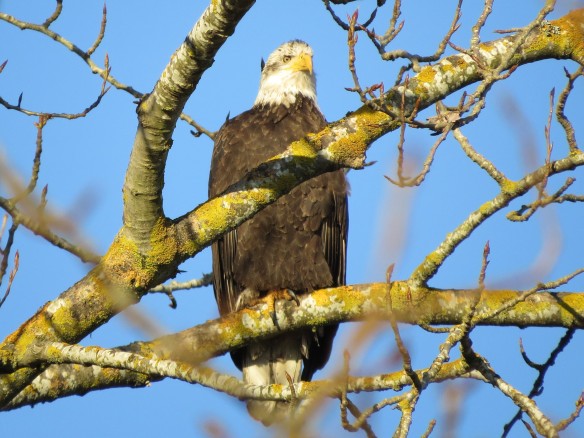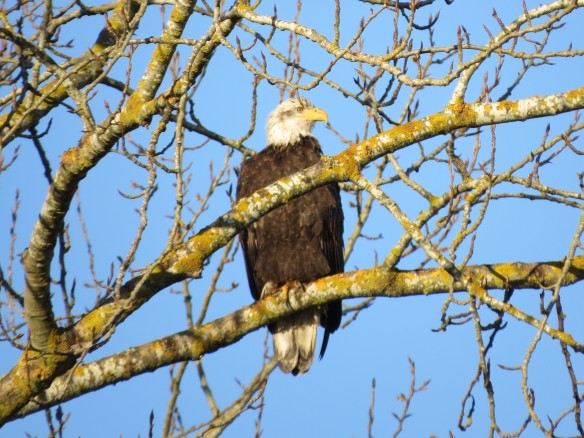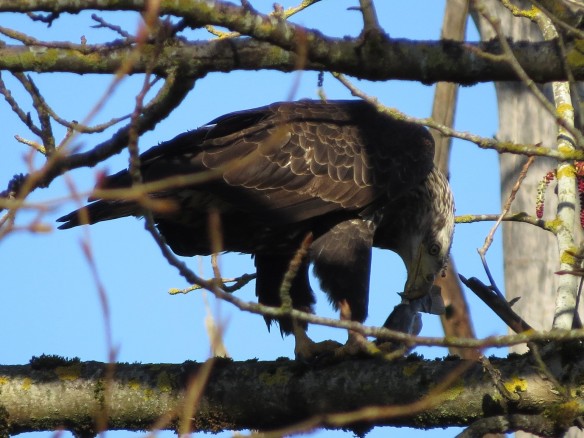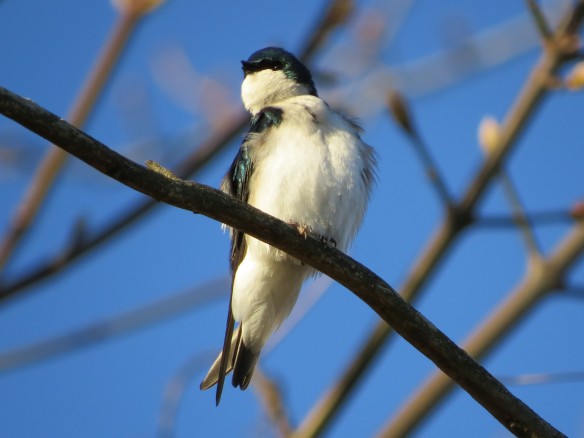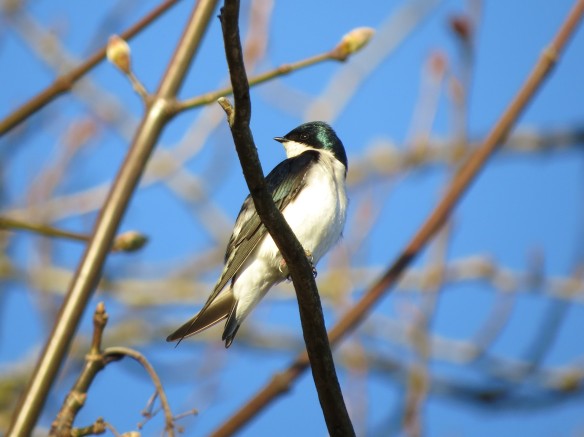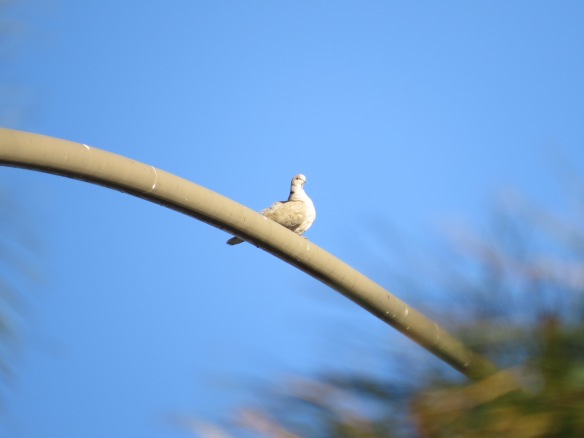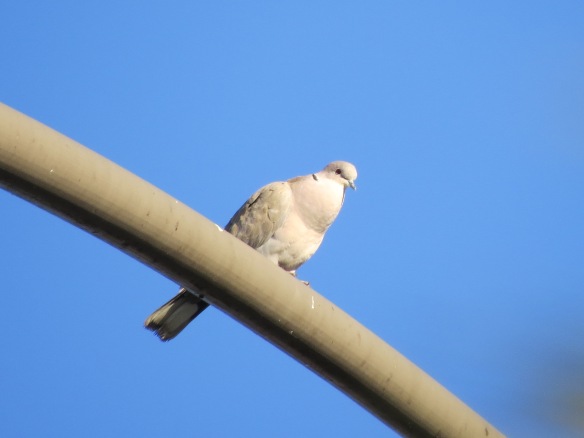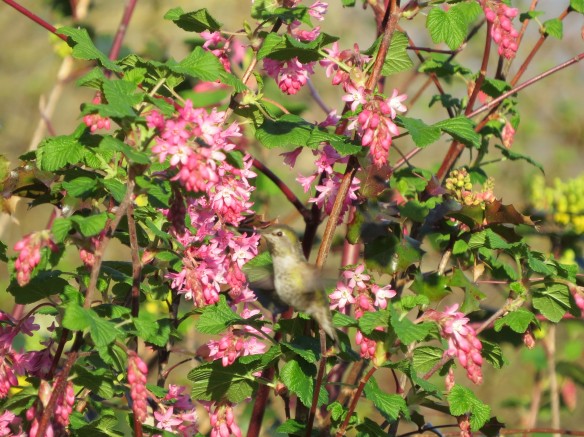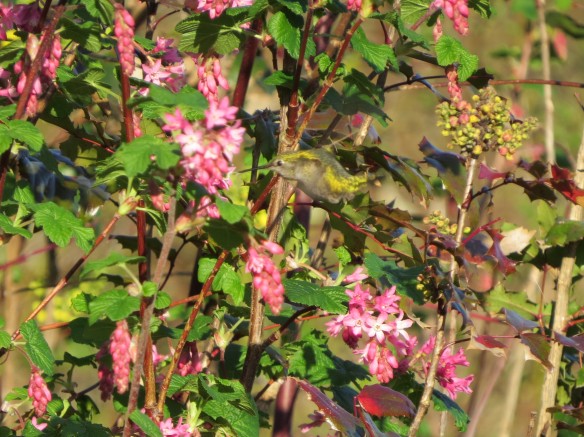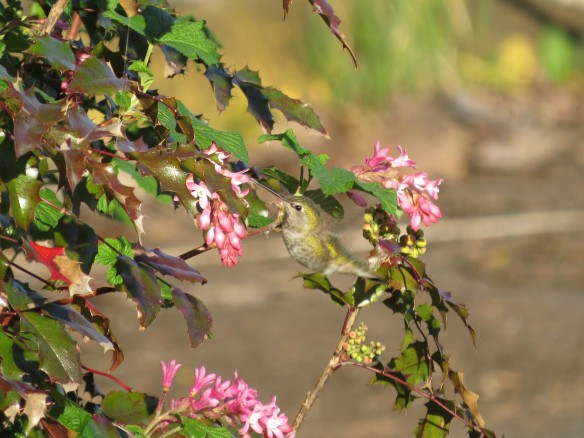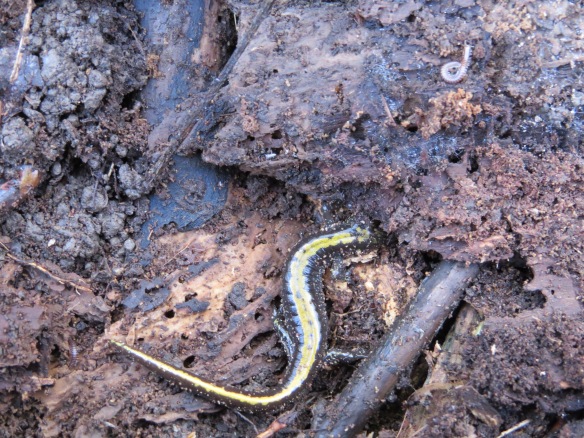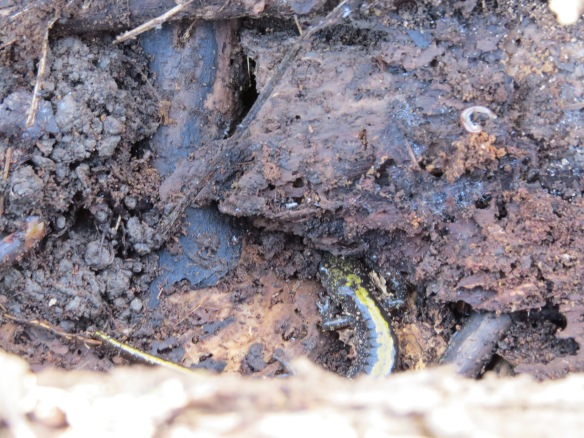I had super-fun at a former Superfund clean-up site a couple of weeks ago! A place now called the “Troutdale Reynolds Industrial Park” that just so happens to include the Sundial Beach Loop Hike. It’s not much of a hike since most of the trail is a paved levee road that is part of Portland’s 40-mile loop.
The trailhead is next to the Troutdale airport and a sewage treatment plant. Along the trail, huge powerlines loom overhead, and a giant substation sits on one side. Paradoxically, lush riparian forests, wide fields, and vibrant wetlands, including Company Lake, make up the rest of the park.

I also just noticed on OregonHikers.org: “A note of caution should be added: the wooded areas are sometimes the camping places of transients and some may not feel safe straying from the paved trail, especially when alone.” So, yeah. There’s that. I saw camps on the sandbar at the “beach” (poor access through thickets, not much of a shoreline), but didn’t run into anyone besides dog-walkers and hikers along the trail.

What the heck was I doing here, you ask? Well, I was here for the birds of course! This area includes a confluence of the Sandy River and the Columbia River and is buzzing with wildlife and birds. To be completely honest, I’d seen several Rufous Hummingbird sightings reported on E-bird here and I had to take a look.
I’m glad I did.

I love this bird.


Giddy, after watching the Rufous Hummingbird for a bit, I got turned around and ran into these charming birds:


I had to do a bit of research (gah- shorebirds!), and I came up with the top as a Greater Yellowlegs (extensive dark bars on the flanks), and the bottom as a Solitary Sandpiper (white “spectacles,” short bill, dark breast). For the Solitary ID I triple checked, since most of the maps show this is uncommon or rare even for this region, however, as someone pointed out, “they’re unusual but far from unheard of in that part of the state.” E-bird also had some sightings in the area, so, Solitary Sandpiper it is!
Additional shorebirds, difficult to see, determined to be Least Sandpipers (yellow legs, dark brown on top, and droopy bills).

There were several birds at this park: Wood Duck, Canada Geese (with goslings!), Kingfisher, Orange-crowned Warblers, Yellow-rumped Warblers, American Goldfinch, Savannah Sparrow, Western Scrub-Jay, Spotted Towhee, Killdeer, and Swallows. Here are some of my favorite pictures.



Another bird I happened upon this day was a Great Horned Owl. Some people “chase the dragon,” I chase “cat ears” in the woods. I’m hooked on scanning tree-tops for those telltale “horns.”

And this one had a little owlet.

I watched the “owl muppet show” for a while. My boyfriend is convinced they’re muppets because of the way they move their heads in circular motions, even though I know they’ve really got “binocular vision,” and are judging objects shapes and distances, but, yeah muppets are fun. It was this owl enocounter in particular, along with a post on Facebook by Scott Carpenter, that inspired me to join the Put an Owl on It team for Birdathon. Because owls.
And that’s not all! After I’d exhausted myself hiking around the industrial park/bird paradise, I hopped on my bike to ride home and included a bit of birding-by-bike along the way. Here’s a small sample of what I found.



An Osprey, a tatter-eared bunny, and my favorite picture so far, of a Savannah Sparrow!
Super-fun!
Tweets and chirps,
Audrey































